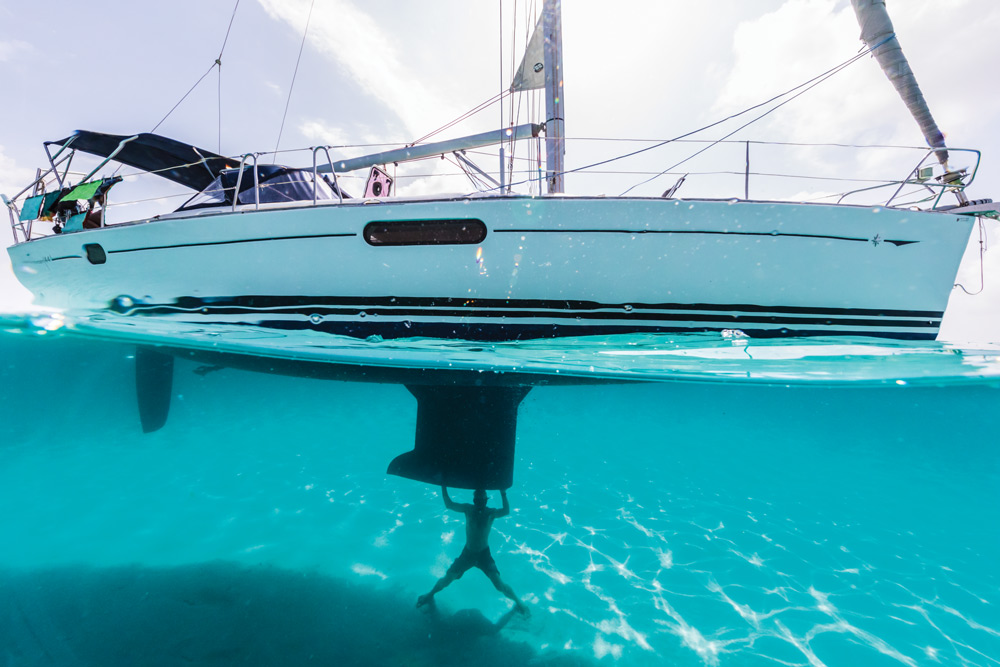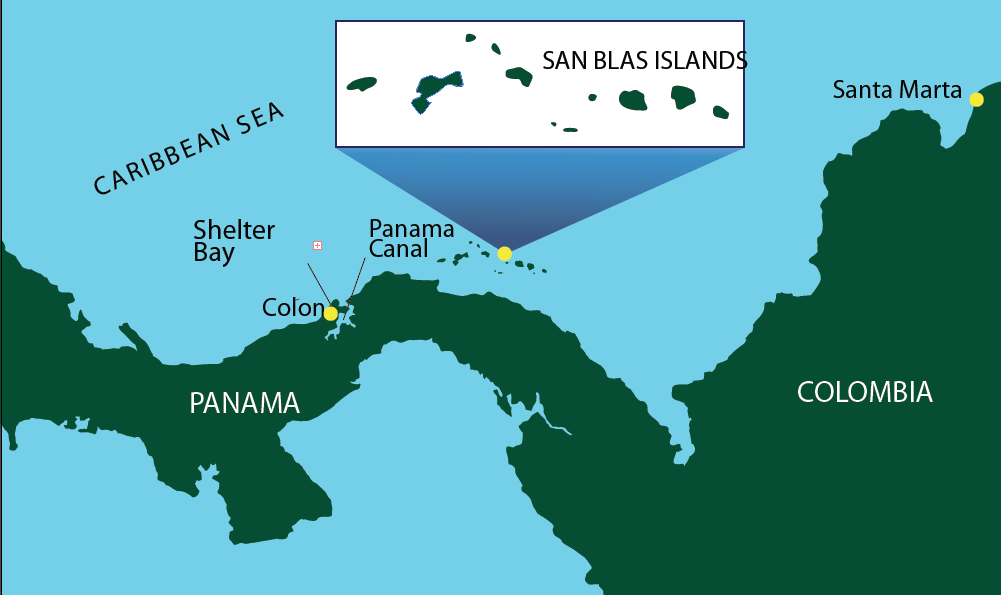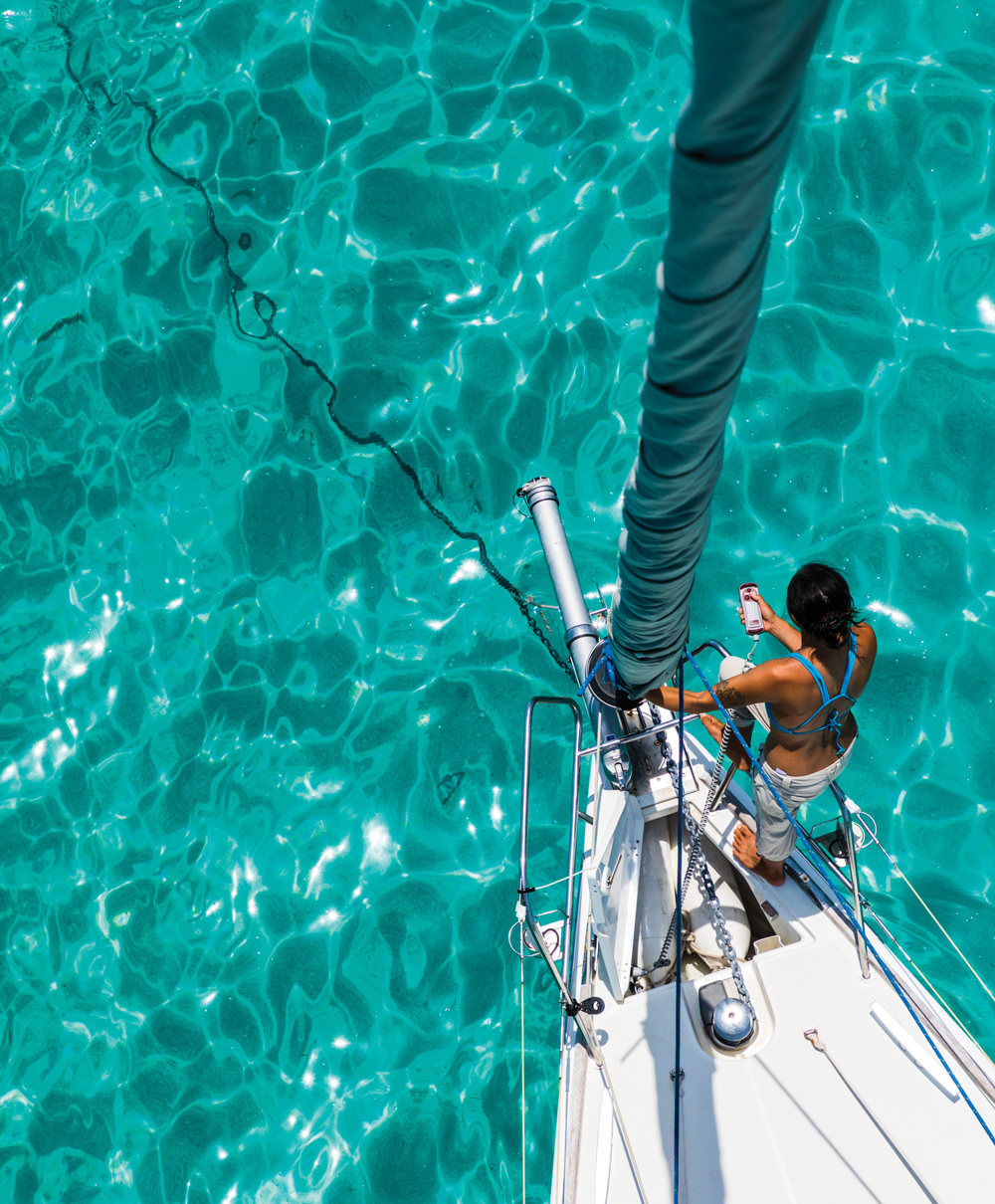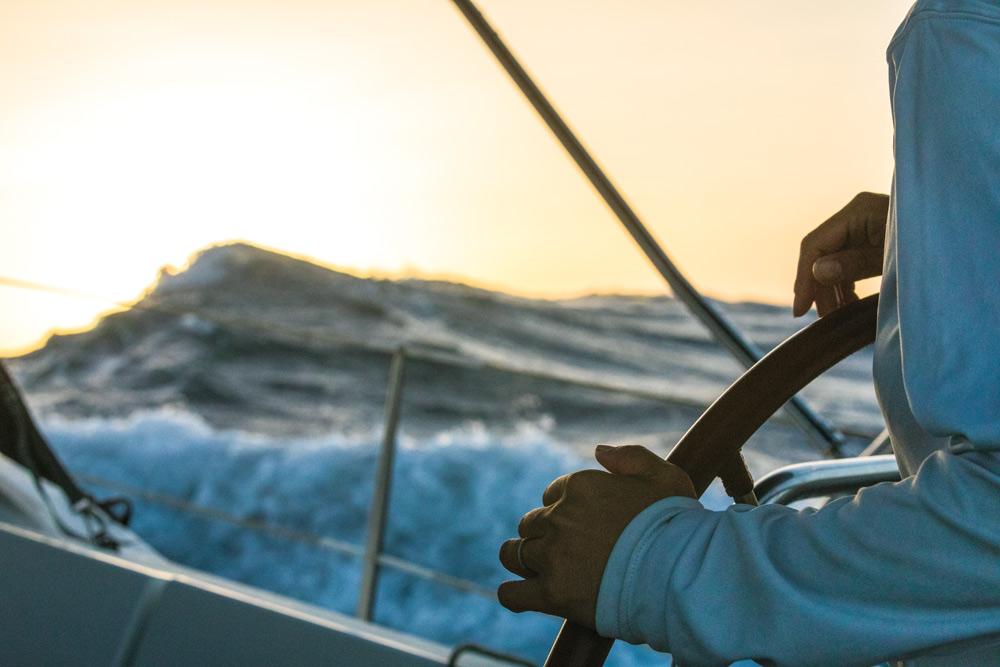When the sea is in a snit
One of the scariest legs of a journey halfway across the world turns out to be a section of the Caribbean Sea, where monster waves, big winds and current combine for a wild ride

With the stern now square to the oncoming wave, I held on to the wheel and braced as best I could. The second wave in the train broke with a roar just as the stern lifted to it. I felt it kick the transom from behind. White water rushed around my knees. At the same time the boat surged forward, surfing down the face of the wave. Spray flew from both sides, as the boat came up on a flat plane. I glanced quickly at the GPS, which showed more than 19 knots of speed over the ground. At this speed the helm felt responsive and controlled, and the boat felt surprisingly stable. We rode the wave out into the flats safely.

Exhilarating as this sailing was, I knew I wouldn’t be capable of keeping up the concentration to handle the boat over the long run. Our autopilot had failed, so we needed a sail setup that the entire crew could handle safely while hand-steering through the night. Running downwind to keep us from broaching seemed best, so we reefed the genoa, turned into the wind with the sail backed, dropped the mainsail and bore downwind under genoa alone. This setup can be slow, but with wind now in the 30-knot range, we still had enough sail to keep the speed up and avoid being overtaken from behind by the worst seas.
Realizing that we would need all the help we could get on the helm, I started teaching our new sailor, Ellen, to steer the boat, which in these conditions was challenging for both of us. It was just after taking the helm that Ellen decided to confide to me that she was dyslexic, and had a hard time telling left from right. Although at first I had to take back the helm a few times to bring her back downwind when she began to broach to the seas, Ellen persevered, and turned out to be a capable helmsman. We passed a fairly rough and wet night, but it was only the few waves that broke at angles to the prevailing wave pattern that really threw us around.
Having grown up hand steering, and watched as the trend toward increasingly reliable autopilots has taken over our turn at the wheel, I appreciated the experience of steering by hand. We all kept a better watch, we were more alert and the crew learned valuable lessons in steering.

Once clear of the pinch zone off the Colombian coast, the trade winds quickly moderated and the seas calmed for the rest of our voyage to the San Blas Islands, although a strong 2-knot east-flowing current set our schedule back an extra night. My guess is that we were caught in a common counter eddy of the Caribbean Current, which departs from the coast off Colombia and heads north toward Florida to merge with the Gulf Stream.
The San Blas Islands are legendary among cruisers. We’d heard reports of overcrowding and pollution there, but found absolutely pristine waters and outrageous sea life in the remote anchorages we visited such as the Holland Cayes. The Guna Indians seemed open and friendly, and invited us to their village for a short visit.
The Guna are a tribe of indigenous people who, through a combination of fierce resistance, powerful friends and wise decisions have not only thrived, but retained a high degree of cultural identity and autonomy from their neighbors. In his excellent “Panama Cruising Guide,” Eric Bauhaus quotes a Guna elder as saying that the Guna have forbidden mining the plentiful gold in their territory because, “Every time we get the gold, someone tries to take it away.”
The Guna are superb artists, and they often visit cruising boats to market their stunning reverse appliqué embroidery work called molas. One visit from a local artist spanned a crossing from one island group to the next, with the artist showing his wares in the cockpit while we towed his skiff.
Guna Yala is independent of Panama, and administration is loose at best. The received wisdom among cruisers is that when making a short visit while travelling from Colombia through the San Blas Islands en route to Panama, is that it’s best to claim Colon, Panama, as their next port of call on the all important zarpé, or clearance document, rather than trying to check in at the San Blas. This worked perfectly for us. We were able to check in at the excellent Shelter Bay Marina in Panama, which also has its own customs facility on site. It’s a welcome trend among progressive marinas to provide clearance on site, rather than sending cruisers on days-long journeys into sketchy towns to deal with bureaucrats.
From Panama we loaded Keala onto a freighter and shipped our boat to Victoria, British Columbia. We managed to get the boat loaded safely in choppy seas off Colon. Having spent months trying to avoid these ships crossing the Atlantic and the Caribbean, it was a bit surreal to suddenly pull right up alongside one and be plucked up by one of their cranes and hoisted aboard.
We are now eagerly awaiting Keala’s arrival in Victoria, for more adventures in the Pacific Northwest.


Comments